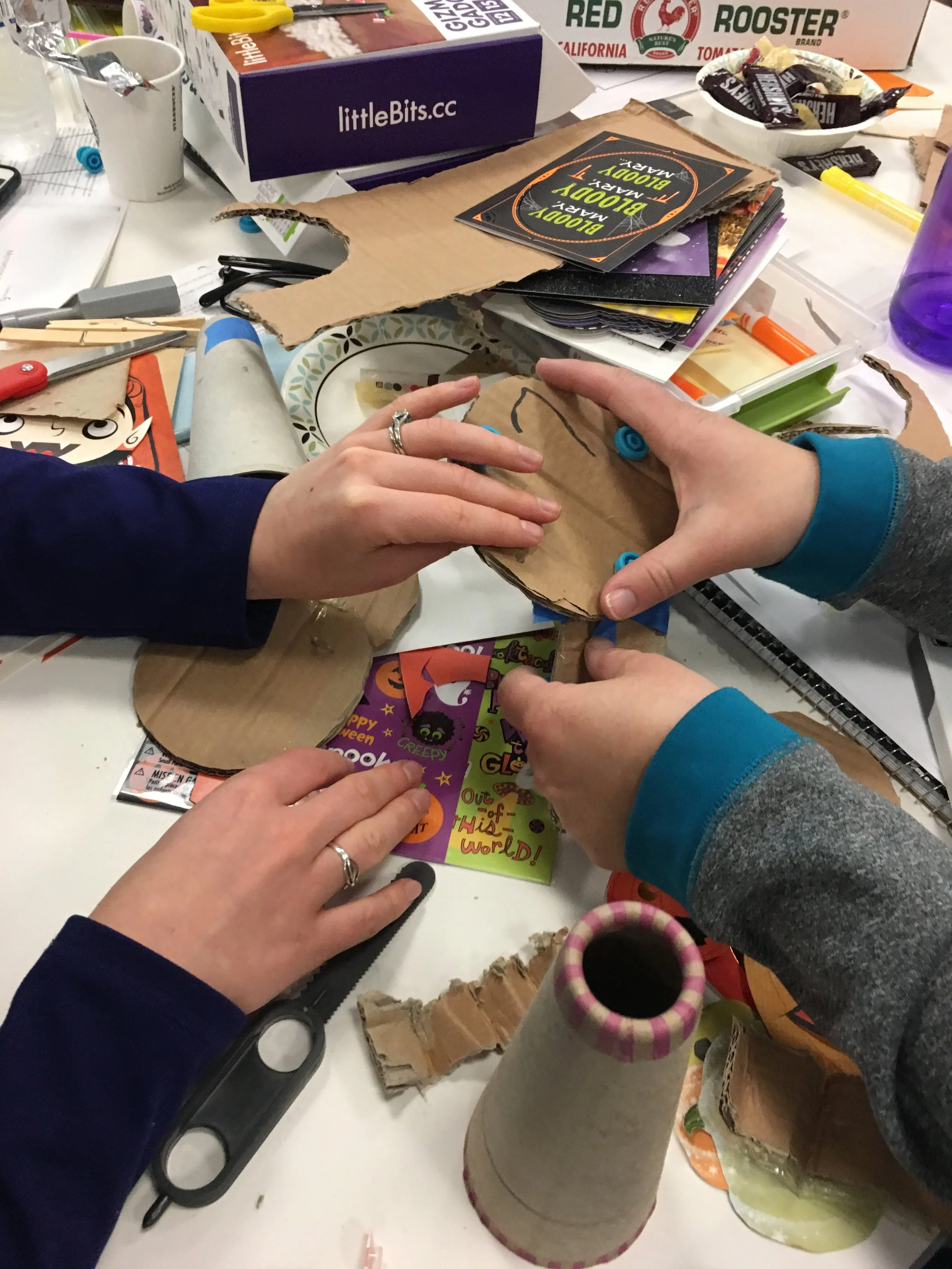Maker Portfolio for Making For Educators Course
As a part of expanding the reach of maker education, I am taking the courses through Sonoma State University toward the Maker Educator Certificate. This page (and linked pages) are all elements of a portfolio required for the Making For Educators Course.
ABOUT Me:
Robert Pronovost is the founder of EmpowerMINT, a makerspace & edtech consultancy, and the STEM Coordinator of Maker Education for the San Mateo County Office of Education. Robert graduated from the Stanford Teacher Education Program, receiving a B.A. in Psychology and M.A. in Elementary Education from Stanford University. In 2013, he created the Ravenswood Makerspace Collaborative, awarded a STEM Innovation Award by the Silicon Valley Education Foundation and First Place in the Microsoft & Krause Center for Innovation 2015 Innovation Awards. Prior to leaving the classroom, Robert taught at Belle Haven School in Ravenswood for five years. He has been named an International Society for Technology in Education (ISTE) Emerging Leader, a Computer Using Educators (CUE) Outstanding Emerging Teacher a Google Certified Teacher, and was invited to the White House’s Roundtable on Making & Education in 2015. Additionally, Robert co-authored Creating a Google Apps Classroom available through Shell Education.
Students in action in Ravenswood - January 2014
MAKER PHILOSOPHY:
As evidence of my maker philosophy, please view my "Ask a Maker Educator" session with Maker Ed.
The short and sweet version is that I believe that making can be found in every culture and community and deserves to be embraced as such. I believe every child deserves the chance to engage with making, not for furthering their STEM work, but for furthering the discovery of their own passions and paths.
MAKER ARTIFACT #1 & Reflection:
As I continue along the journey of gaining a Maker Education Certificate, I do so with the ambition of bringing these courses to the Peninsula and South Bay areas of the San Francisco Bay Area. Currently, the face-to-face course is only given in Sonoma County, which can be limiting for educators who don't have access to a vehicle to drive long distances or who have other commitments, especially family, that might not allow them to make the journey to Sonoma County for four Saturdays.
I enjoyed the problem solving that went with building this vehicle to share the Maker Education Certificate further south in California. The idea of saving keys from discarded keyboards was a brand-new idea for me, and enables more communication in the design of an object.
MAKER ARTIFACT #2 & Reflection:
As a first custom design using the Carvey by Inventables, I took a basic tangram outline and added the name of each shape to the design. This is an example of an object that a teacher could design to use in their classroom, especially for students who are working on their vocabulary in geometry.
The design of the object was done in Adobe Photoshop and could've been completed in the free alternative, Inkscape. The actual carving of the object was difficult. At first, I made the mistake of inputing the material as PLA instead of Acrylic, which led to one of the CNC bits breaking. Two other bits broke along the way, although I could not determine the cause.
My first main learning from this project is a reminder that we as instructors must do a project before we ask students to do it, so we know some of the mistakes and barriers that could be in their way. The second learning is that we need to give students the benefit of the doubt when they are using equipment and not rush to judgement on their misuse, as even a more experienced maker such as myself can unintentionally break material without any malicious intention.
MONDAY LIST:
(activities or projects that you have the materials to implement the following Monday)
To the left are some recent, relevant attempts at using the vinyl cutter to design stickers. I still need to work through which font types work best for vinyl stickers.
We also have been thinking about Squishy Circuits for a while but had difficulty figuring out how to create the conductive dough easily. Now knowing that Play-Doh acts as conductive dough, we will be able to combine that with discarded power supplies to engage students in this fun way of learning about circuits.
SOMEDAY LIST:
(activities and projects in which you outline the required materials AND the materials you still need to have donated, purchased, or made)
Two someday projects:
Tangrams using a laser cutter rather than a CNC mill - We are waiting on the Glowforge to be distributed.
Using iron-on vinyl to customize t-shirts for our Make/Learn celebration event at SMCOE. - We need to acquire t-shirts and iron-on vinyl.
Ravenswood Makerspace Collaborative
In 2013, I began work on the Ravenswood Makerspace Collaborative by designing, fundraising, and building the first Ravenswood makerspace at Los Robles Dual Immersion Academy. All the information about my research and design can be found at RavenswoodMakerspaceCollaborative.com, along with their recent work.
Maker Volunteer Hours Reflective Post - Pre- STEAM Fest 2.0
On Saturday, April 29th, I will be leading a cardboard city creation room at Redwood City STEAM Fest 2.0. The Redwood City Public Library and the Redwood City Parks, Recreation and Community Services Department are leading this work after a very successful event last year that was organized by a mother/son duo. In planning the cardboard city work, the most important element has been collecting the materials - cardboard, MakeDo kits, and electric cardboard cutters. Given that this event is expecting over 5,000 attendees and I have managed a maximum of 20 students creating with cardboard before, I hope and expect the visual instructions and guides will be the key to a successful event.
I am excited about this event because it ties directly to my personal beliefs and the educational philosophy of the Maker Certificate Program. Most important to me, it is open to all, is driven by students, and is an opportunity for all ages to collaborate. I hope that the experience of this maker activity will help parents (and educators) realize how much can be done with a small investment. I also expect parents to end up getting involved in the making themselves, which can be a great experience for kids who may not have seen their parents as makers before. That said, I believe that a lot of the attendees may be ones who have ample experience with making, so I want to make it a goal of mine to invite in the families who are more reserved and observing.
Cutting and prepping cardboard is not a lot of fun, but imaging the possibilities for kids definitely makes it worth it!
Maker Volunteers Hours Reflective Post - Maker[Space]Ship Visit
On March 23rd, I was fortunate enough to visit the San Jose Public Library Maker[Space]Ship. It is a portable makerspace bus that support children in San Jose through visits to schools and workshops held at areas that the traditional libraries are not able to reach. For the session I visited, the Maker[Space]Ship was parked at Our Lady of Guadalupe Church. The session was focused on paper microscopes, a project that could be done for a matter of pennies but could really engage students in the science of lenses, exploration, and the idea that they could make such a piece of scientific equipment.
A few things struck me upon my visit. The first is how large the maker network is in our expanded Bay Area community. I had no idea about the Maker[Space]Ship prior to a week before my visit and learned about several other informal maker spaces through visiting. The second is how much further being a maker expands beyond even what I’ve been able to conceptualize or experience. An incredible maker educator, Corinne Okada Takara, introduced me to the maker world of bioengineering and biohacking, concepts I could not imagine being a part of our K-12 maker world before our talk (and I still have a lot to learn). A third thing that really spoke to me during the visit (- I don’t want to say final because there were several more things that struck me as well- ) is the amount of environmental care that was put into the development of the bus, from the solar panels to the mini greenhouse in the front windshield. I often hear, and say, that we as makers need to be thinking carefully about our effects on the environment, but it becomes even more illuminated when all the waste that is created on the bus needs to be disposed of by those running the bus, and the use of energy is very observable through either the depletion of the solar reserves or the need to refuel the vehicle.
All said, this may have been my first visit to the Maker[Space]Ship, but it shall not be my last. I also expect a mobile makerspace to be more present in my life in the coming years as well.
Maker Action Plan Reflection
My Maker Action Plan, created during my Introduction to Making course, was to implement portions of the Introduction to Making course into highly-valuable 3 hour workshops that educators could attend on Saturday mornings. I wanted to do this in order to help educators gradually enter into seeing themselves and their students as makers, especially those who are not able to dedicate a whole weekend or get a sub to cover their class to attend a workshop.
It has definitely been a challenge to distill some of the experiences down to a short time-frame and to have them be able to stand alone in addition to build upon one another.
Splitting the experiences up have led to some that I feel have had a lot of depth, such as our experience of the Agency by Design thinking routines, but also some that have been fun but could have tied more explicitly to the standards, such as our Become a Maker! session.
The first lesson that I’ve learned is that it is always ideal to lead a workshop with a co-presenter, both for my experience and for the experience of the attendees. The times when I have felt the most successful are when I have a co-presenter, Bruce Duncan. It could be because I get a small break and participants get to hear another voice, but it’s really due to both the levity and professionalism he brings to our sessions. Next year, when leading some of the Maker Educator Certificate courses, I’m going to try to ensure I have a co-presenter at all times, since multiple perspectives continually beat out a single one.
The advice I’d give to anyone else trying to lead similar maker trainings is to develop a roadmap/trajectory ahead of time. I was developing the workshops along the way, working out between each one how they would flow into and support each other, but this summer I will be developing a trajectory that any interested maker educator could follow or jump into as they see fit.

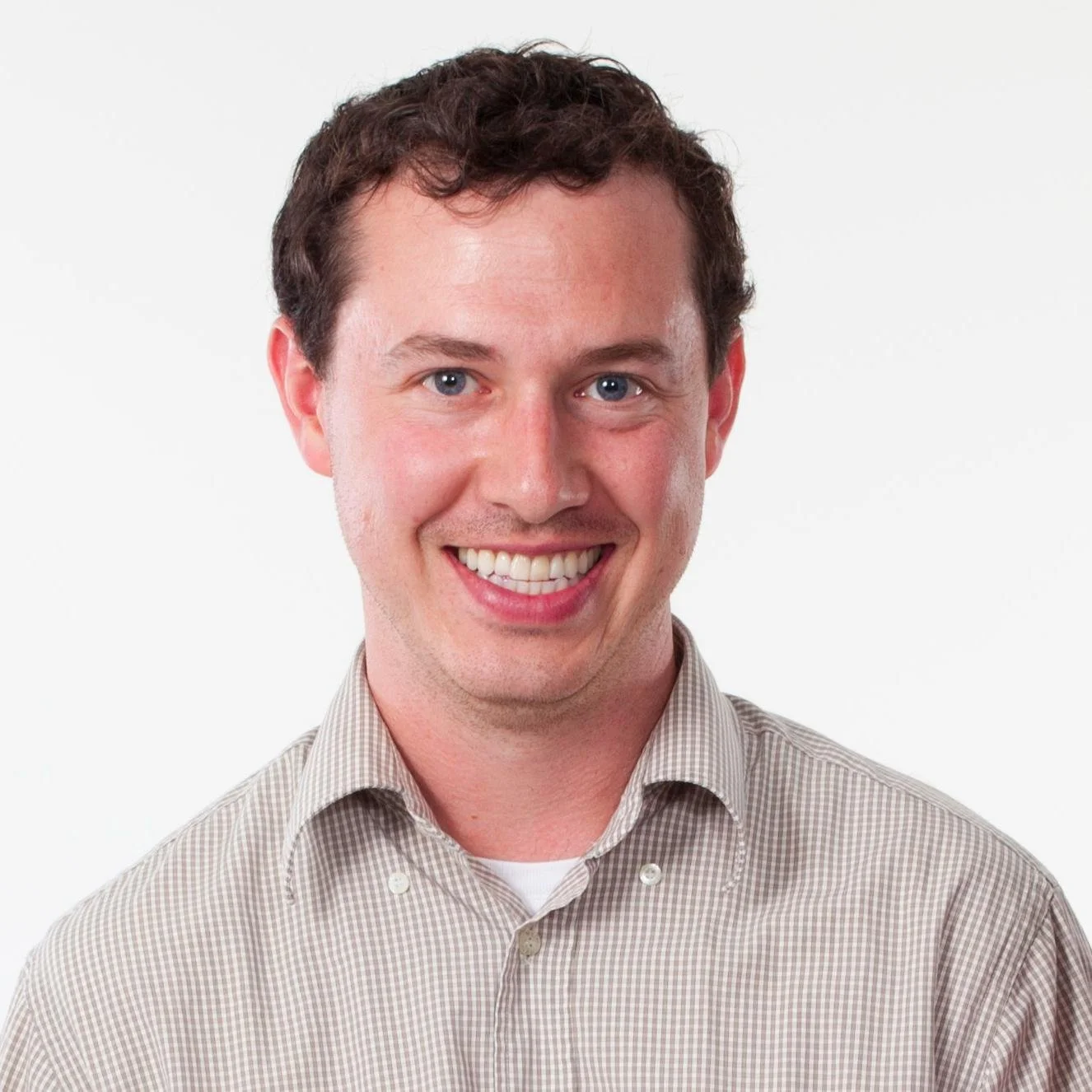

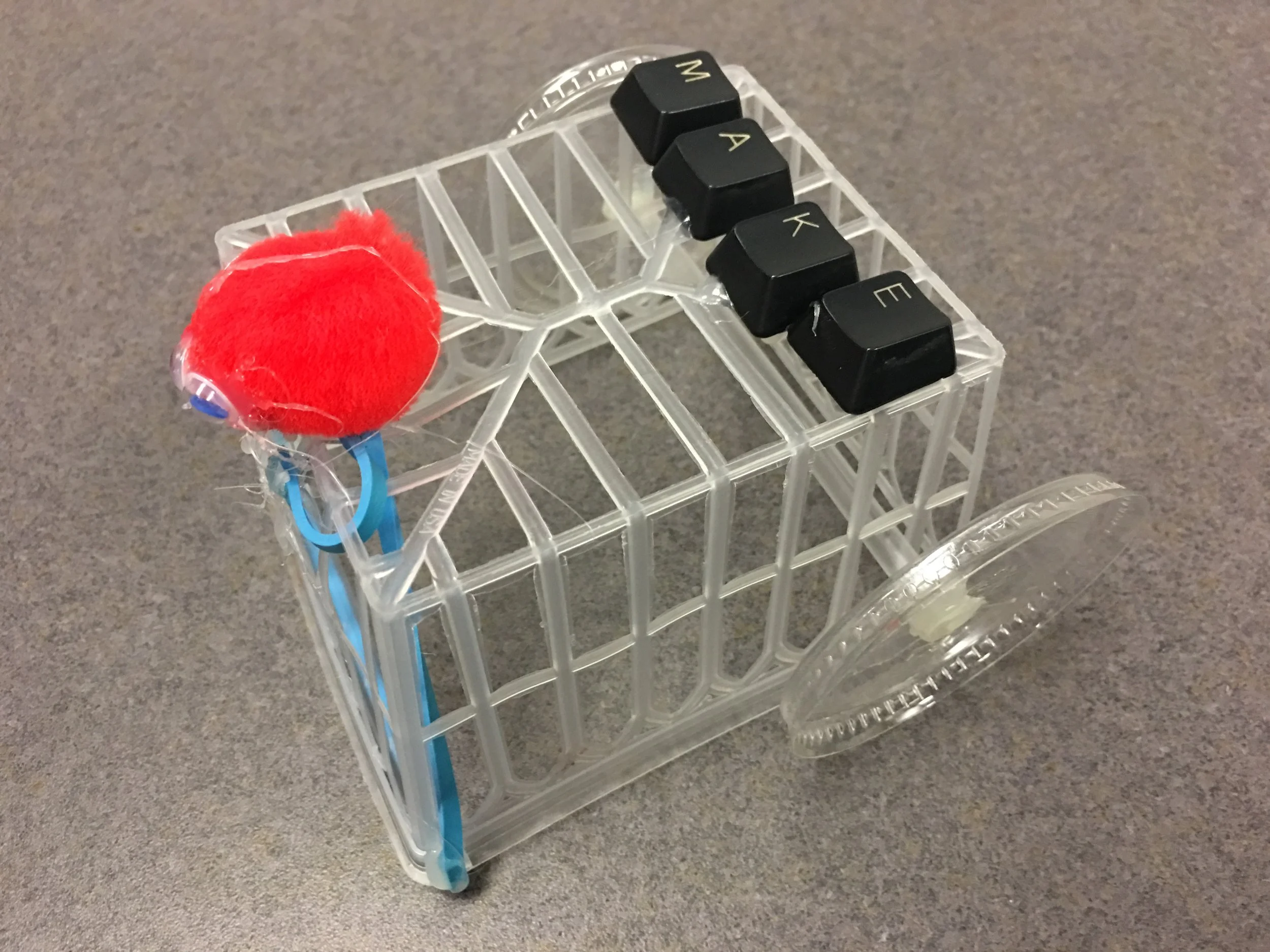
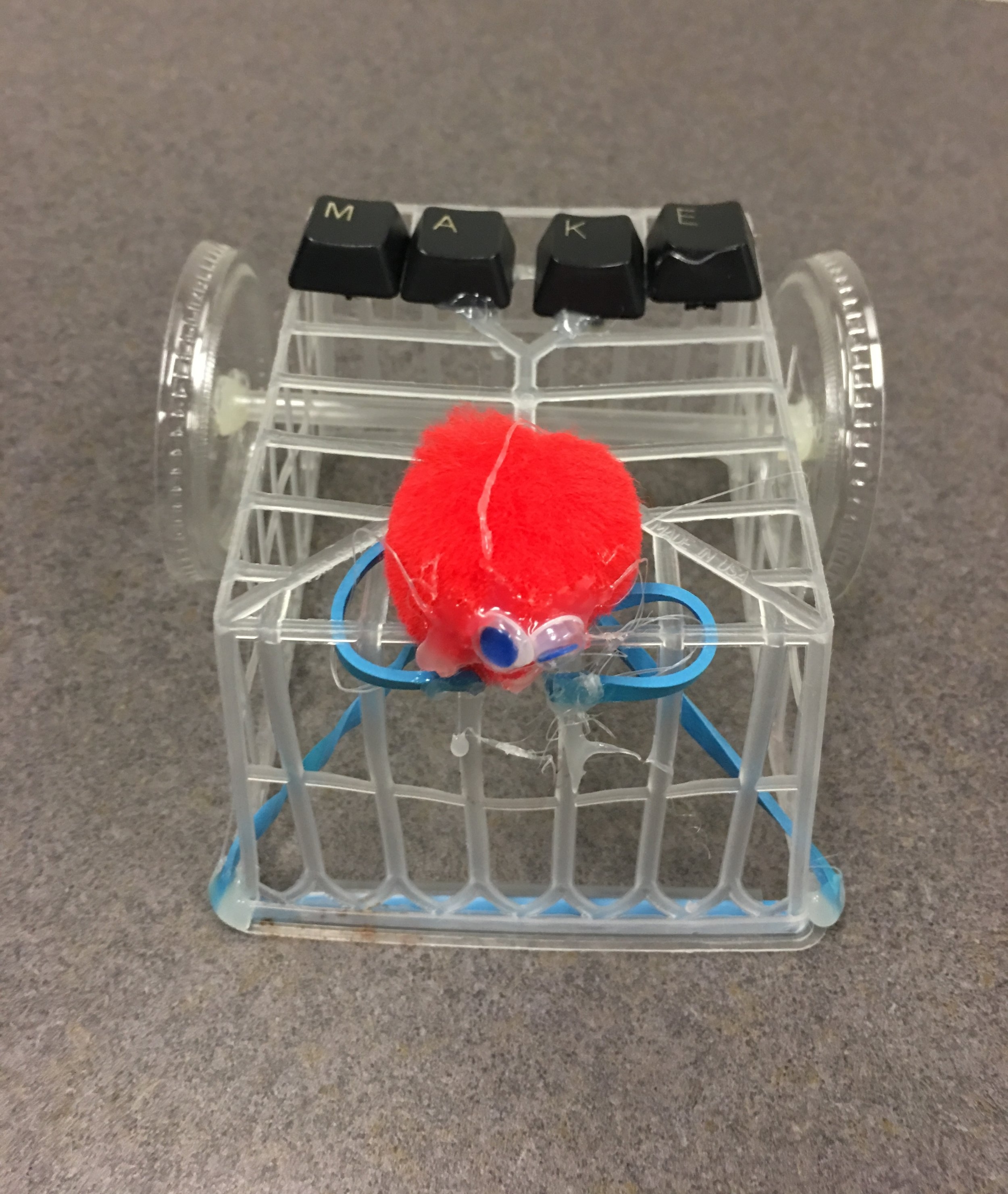



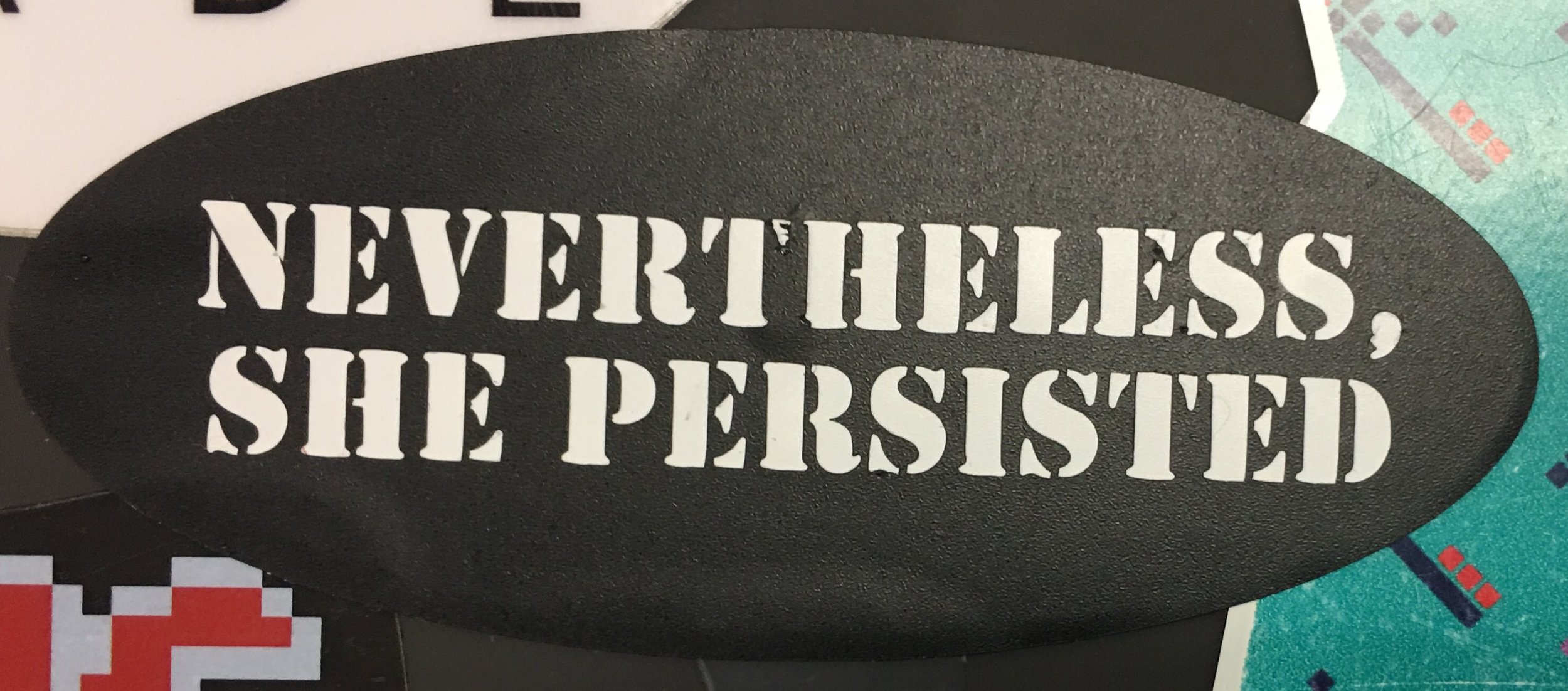


![Maker[Space]Ship](https://images.squarespace-cdn.com/content/v1/574f24bd45bf21835635b1e7/1492829243335-AICTU3XXL6PTN2BHU0WS/Maker%5BSpace%5DShip)
